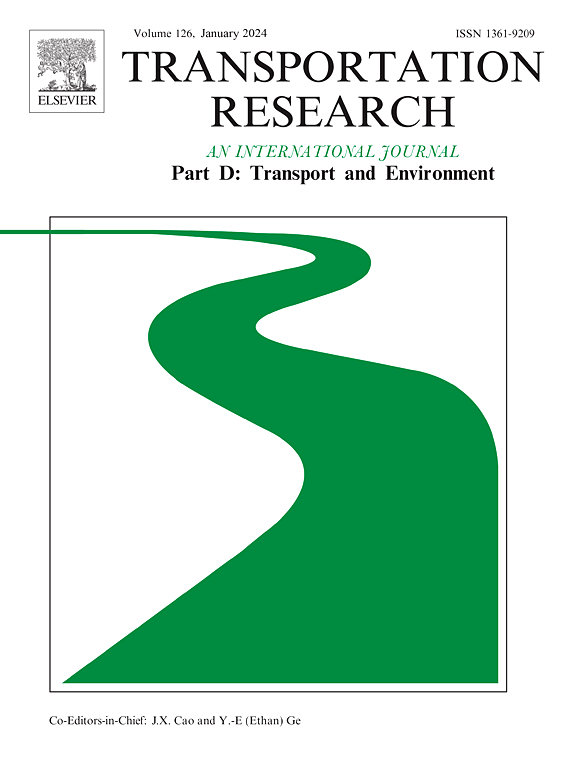Incorporating mobility-on-demand into public transit in suburban areas: A comparative cost-effectiveness evaluation
IF 7.3
1区 工程技术
Q1 ENVIRONMENTAL STUDIES
Transportation Research Part D-transport and Environment
Pub Date : 2025-05-08
DOI:10.1016/j.trd.2025.104775
引用次数: 0
Abstract
Transit Incorporating Mobility-on-Demand (TIMOD) represents the public–private partnerships in which transit agencies incorporate MOD services to supplement fixed-route transit. This study evaluates the cost-effectiveness of TIMOD compared to buses, driving, and ride-hailing in suburban settings. For each alternative, it estimates the marginal costs for travelers, service providers, and transportation externalities, which constitute the marginal social cost. In the study cases, TIMOD is the least cost-effective option, with marginal social cost approximately 20% higher than TNCs and over three times higher than driving. For travelers, TIMOD costs more than driving but less than buses and ride-hailing when considering time value and fare. The cost of TIMOD declines as population density increases. Suburbs with less bus services and higher income residents benefit more from TIMOD, realizing greater reductions in time costs compared to buses. Transit agencies should explore alternative ways to improve mobility for disadvantaged suburban residents by offsetting driving costs and subsidizing TNCs fares.
将按需出行纳入郊区公共交通:比较成本效益评估
交通运输结合按需移动(TIMOD)代表了公共-私营合作伙伴关系,在这种伙伴关系中,交通运输机构结合MOD服务来补充固定路线的交通。本研究评估了在郊区使用TIMOD与公交车、自驾和叫车相比的成本效益。对于每种选择,它估计了旅客、服务提供者和运输外部性的边际成本,它们构成了边际社会成本。在研究案例中,TIMOD是最不具成本效益的选择,其边际社会成本比跨国公司高约20%,比驾车高三倍以上。对于旅行者来说,在考虑时间价值和票价时,TIMOD的成本高于自驾游,但低于公交车和网约车。TIMOD的成本随着人口密度的增加而下降。公交服务较少的郊区和收入较高的居民从TIMOD中受益更多,与公交相比,时间成本的降低幅度更大。交通运输机构应该通过抵消驾驶成本和补贴跨国公司的票价,探索改善弱势郊区居民机动性的其他途径。
本文章由计算机程序翻译,如有差异,请以英文原文为准。
求助全文
约1分钟内获得全文
求助全文
来源期刊
CiteScore
14.40
自引率
9.20%
发文量
314
审稿时长
39 days
期刊介绍:
Transportation Research Part D: Transport and Environment focuses on original research exploring the environmental impacts of transportation, policy responses to these impacts, and their implications for transportation system design, planning, and management. The journal comprehensively covers the interaction between transportation and the environment, ranging from local effects on specific geographical areas to global implications such as natural resource depletion and atmospheric pollution.
We welcome research papers across all transportation modes, including maritime, air, and land transportation, assessing their environmental impacts broadly. Papers addressing both mobile aspects and transportation infrastructure are considered. The journal prioritizes empirical findings and policy responses of regulatory, planning, technical, or fiscal nature. Articles are policy-driven, accessible, and applicable to readers from diverse disciplines, emphasizing relevance and practicality. We encourage interdisciplinary submissions and welcome contributions from economically developing and advanced countries alike, reflecting our international orientation.

 求助内容:
求助内容: 应助结果提醒方式:
应助结果提醒方式:


